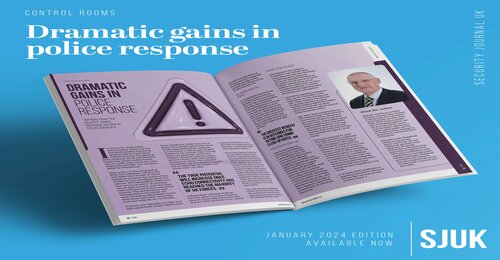North Yorkshire and Devon & Cornwall are the latest police forces to become ECHO-connected having joined in August and November 2024 respectively. Their addition brings the total number of ECHO-connected police forces in the UK to 13, with ECHO enabling the efficient handling of over 70,000 Intruder and Hold-up Alarms incidents annually, improving police response times and outcomes for victims.
Leading Echo-connected alarm receiving centres (ARCs) including ADT, Secom, Cougar/K-SOC and Banham are now delivering automated alarm signal service levels in excess of 90%, facilitating quicker police response and ensuring faster, more effective action.
James Sharp, Operations Director at Cougar Monitoring/KSOC explained: “Using ECHO to contact the police has provided several benefits, particularly in enhancing the efficiency and accuracy of our response. The uniformity of the data being sent to the police has meant a consistent response and timely dispatch. It has also enabled us to keep track of our live URNs (alarm incidents) in a more efficient way. The speed of (alarm signal) delivery to the police has made a marked improvement. The time taken to pass alarms significantly reduces and gets a more accurate and instantaneous response. This allows for better scalability, reliability and time efficiencies overall. We are also able to better report against activations as our AMS (Alarm Management System) logs the case in a step-by-step sequence removing the need to listen back to call recordings to investigate an incident.
Paul MacQueen, Control & Command Manager at Secom commented, "I have been with SECOM for over 32 years and in that time SECOM has seen many significant changes and improvements within our industry. The introduction of ECHO is another one of those changes that has improved our industry for certified security companies such as SECOM, in terms of speed of Police response, driving better customer service for our clients, as well as enhancing the labour and time efficiency within our business, reducing miscommunication between SECOM and the Police operational staff."
Rick Carr, Systems Manager at ADT Fire & Security underlined this: “ADT has a long history of automated alarm transfers to the police which precedes the ECHO story. We are now firmly committed to ECHO which has in the last 4 years created opportunity for all police forces to benefit from automated alarm transfer whilst at the same time keeping it simple for ARC infrastructure and reducing costs.”
At Banham, Roger Kay, Associate Director, elaborated: “Banham were very excited to be a part of the proof of concept for ECHO in the early days testing the passing of URNs to Essex and the Met via ECHO. It’s true to say we’ve never looked back: there are zero downsides to the ECHO process and it’s quicker and more accurate than calling the Force Control Room. Any associated cost more than repays itself; ECHO makes it as simple as possible to declare URN elements by the associated force and customers benefit from officers attending as quickly as humanly possible. Our regular internal URN audits are a good thing too, more than offsetting our time saved in operations.”
Martin Harvey, Director at ECHO commented: “ECHO has proven itself to deliver a win-win for police forces and ARCs in responding to alarm incidents, enabling a fast efficient response with increased likelihood of better outcomes for victims of crime, at the same time ensuring a better use of resources by all players in delivering that outcome. This is the potential reality for all police forces and we encourage those who have yet to commit to get ECHO-connected.”
Eight additional police forces - Dorset, Durham, Gwent, Lancashire, Leicestershire, Merseyside, Surrey and Sussex - have installed their 'Alarms Interface' and are currently awaiting activation.
In 2025, ECHO is planning to further enhance its alarms interface package to include the Unique Property Reference Number (UPRN) data some forces rely on, as well as police responders ‘time of arrival’ (at incidents) and incident reason codes to better inform ARCs and their customers about incident status in real time, further improving links between ARCs and their police counterparts, whilst saving call handlers’ time.





